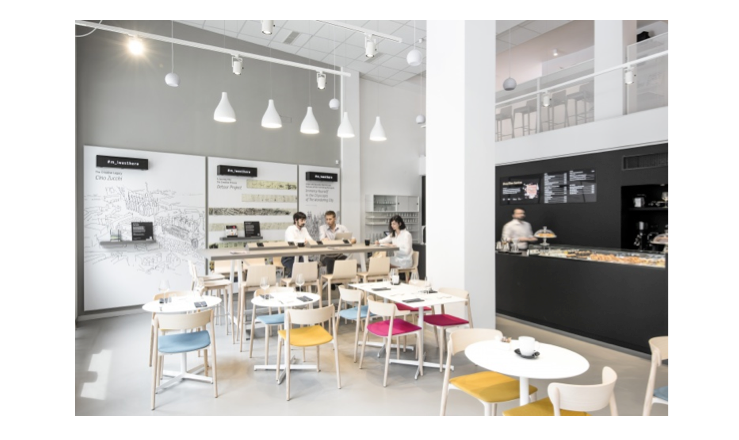Creatively Extending Brands with Cookies and Coffee
January 11, 2018 - by David Kirkpatrick
While we typically think of “branding” as including elements such as logos, brand icons, slogans and catchphrases, we are seeing an emerging trend of emphasizing customer service touches. These play an important role in making customers feel valued and special, such as when Starbucks baristas write a customer’s name on their coffee cup. Any of these elements can be made the focus of marketing campaigns, which is something that we see all the time – for example, the logo will likely feature heavily in any visual effort, and slogans and catchphrases are going to factor into messaging. But, using a brand element in an unexpected way can be a very effective tactic.
DoubleTree by Hilton is known for offering warm cookies to its guests at check-in, and last fall it tapped that informal brand element for an innovative, integrated campaign, “Your Warm Cookie Awaits,” that turned a hotel check-in service into an out-of-home (OOH) marketing activation. The hotel chain used the hashtag #SweetWelcome to add a social media aspect to the effort and shared cookies at three different events including a U.S. citizen naturalization ceremony in Boston, a military culinary competition in Washington, D.C., and a charity bike ride in Malibu, California.
The campaign was a success with actress and philanthropist Monique Coleman, who partnered with the brand at the Boston event, posting an Instagram Story chronicling the event earning 20,749 engagements. At that stop on the OOH tour DoubleTree passed out around 5,000 of its signature warm cookies.
What made DoubleTree’s OOH activation interesting is it took a brand device out of its element. The hotel chain’s warm cookies at check-in are a somewhat informal brand element — even though the cookies do have their own page on the company website under the “our story” section – and while the cookies might be something customers look forward to, they expect to find them at the check-in desk. DoubleTree took that experience on the road and took part in the current growing trend around out-of-home marketing activations.
While many people — especially those who have never stayed at a DoubleTree hotel and are unaware of their cookie commitment — may have difficulty making the connection between the treat and the hotel, there has long been historical precedent for unusual (yet highly successful) brand extensions. For example, while many foodies today may not see how a tire company relates to fine dining, it hasn’t kept the Michelin Guide from remaining one of the most important judgements of quality in the culinary world. Same with Guinness, the stout maker whose seemingly unrelated book of world records continues to be a best seller and an important point of cultural reference.  More recently, Moleskine took an opposite approach to DoubleTree for their brand extension. Rather than taking an element of a hospitality experience and bringing it into the CPG space, Moleskine is taking a significant part of their brand image as a CPG company and venturing into hospitality. Last year the brand famous for its journals debuted a cafe in Milan, with the intention of providing an inspirational hangout and work space for the exact kinds of creative types that stereotypically use their products.
More recently, Moleskine took an opposite approach to DoubleTree for their brand extension. Rather than taking an element of a hospitality experience and bringing it into the CPG space, Moleskine is taking a significant part of their brand image as a CPG company and venturing into hospitality. Last year the brand famous for its journals debuted a cafe in Milan, with the intention of providing an inspirational hangout and work space for the exact kinds of creative types that stereotypically use their products.
As a marketer, it’s always a challenge to get beyond the standard line-up of campaign options. One way to do so is simply take stock of the brand elements available including those more informal branding touches like the personalized Starbucks cups or DoubleTree’s warm cookies. Customers know those touches and associate them with brands. From there, consider how a brand element can be taken out context and be used in an unexpected and novel way for a campaign with impact.
- < Previous Audio in Branding
- Next > 25 Package Design Trends for 2018




